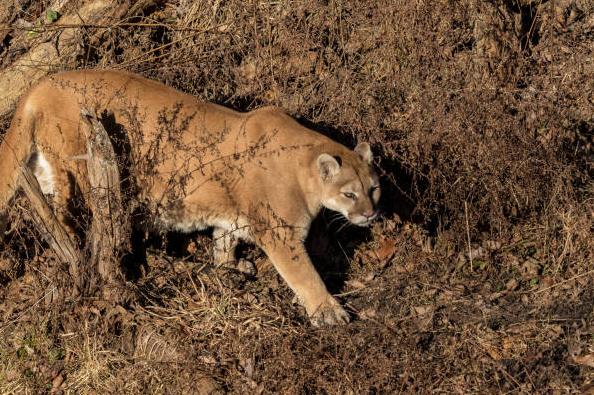
A group of five cyclists in Washington state had a peaceful afternoon of riding turned terrifying when they were suddenly accosted by a cougar on a route northeast of Fall City, which is roughly 25 miles east of Seattle.
The incident, which occurred around 12:50 pm local time on Saturday, resulted in one woman being rushed to the hospital while authorities grappled with the presence of the predatory animal.
Terrifying Encounter
The Washington Department of Fish and Wildlife swiftly responded to the scene, where officers encountered and removed one subadult cougar.
However, concerns lingered as eyewitness accounts suggested the potential presence of a second cougar, prompting a thorough search effort by wildlife officials.
While the identity of the hospitalized woman was not disclosed by officials, it was confirmed that she was in stable condition following the attack. Details regarding the condition of the other four cyclists involved were not provided at the time of reporting.
Despite the rarity of such occurrences, the encounter underscores the unpredictable nature of wildlife interactions, particularly with cougars. According to the National Park Service, sightings of these elusive creatures are infrequent, and attacks on humans are exceedingly rare.
However, historical data from the state Department of Fish and Wildlife reveal a handful of documented cougar-human encounters dating back to 1924, including fatal incidents.
Notably, in July 2023, an 8-year-old camper narrowly escaped serious harm during a cougar encounter, thanks to quick action by the child’s mother.
Cougars, the largest members of the cat family found in Washington, exhibit primarily nocturnal behavior, heightening the surprise of daytime encounters. Adult males typically weigh around 140 pounds, while females rarely exceed 110 pounds
Read more: Delta Flight Compensates Passengers Amid Maggot Shower Crisis
Surviving Cougar Encounters

In light of such encounters, wildlife experts emphasize crucial safety measures for individuals who encounter cougars in the wild.
Rather than fleeing, which may trigger the predator’s instinct to give chase, experts advise grouping together to appear larger and emitting loud noises to deter the animal.
Should a cougar display signs of aggression, such as baring teeth or hissing, individuals are encouraged to assertively defend themselves by shouting, waving arms, and utilizing any available objects for protection.
State Department of Fish and Wildlife guidelines stress the importance of convincing the cougar that humans are not prey but potential threats.
Moreover, in the event of an attack, individuals are urged to fight back vigorously, utilizing whatever means necessary to repel the cougar.
Instances of successful defense have involved the use of various objects, including sticks, rocks, and even bare hands, to fend off the aggressive animal.
Ultimately, while encounters with cougars remain rare, awareness of proper safety protocols and swift action can mitigate the risks associated with human-wildlife interactions, ensuring the well-being of both individuals and wildlife in Washington’s diverse outdoor landscapes.
Read more: Airbnb Host Sued For Invasion Of Privacy After Sending Guest’s Photo To His Wife

